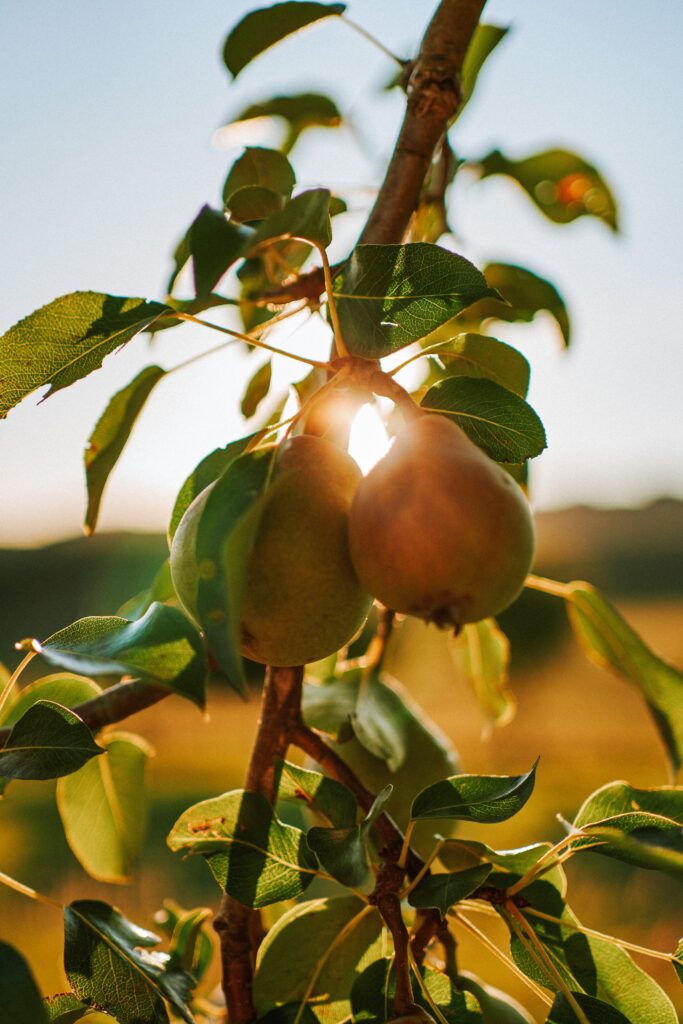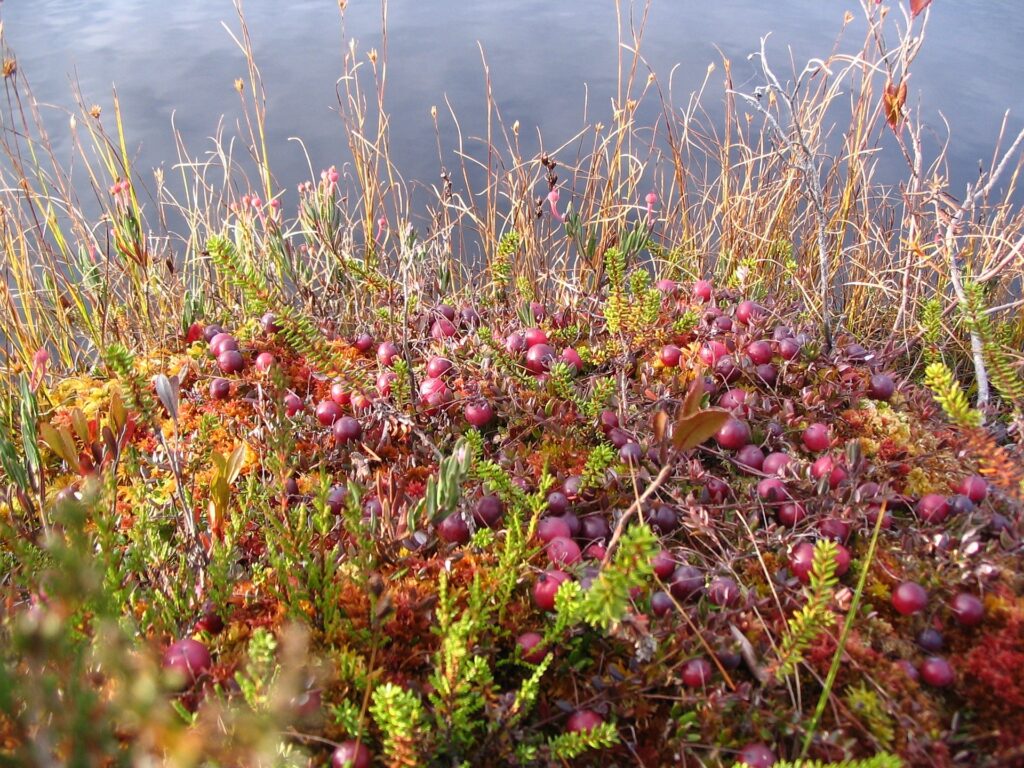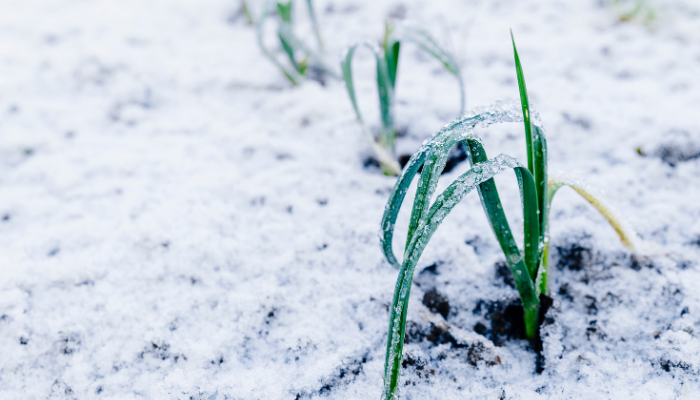
As the winter winds howl outside, I like to curl up and dream of my garden to come. And with visions of sugar plum trees dancing in my head, I browse nursery catalogues. Buying a fruit tree isn’t like picking out perennial flowers though. It’s a larger investment and needs special care. And the best start for your fruit tree comes before you buy – it comes from doing a little research first.
Let’s look at some of the common considerations when buying a fruit tree.
Bare root or Potted
You can either buy a fruit tree as a bare root from a mail-order nursery or in a pot at a garden centre. The bare root is just as like it sounds – the tree will be shipped before it has started to grow in spring and there will be no soil around the root. The garden centre will sell a tree that is in a pot and already leafed out and growing.
Buying a bare root fruit tree can have some benefits:
1. When you buy a bare root tree you can often select which rootstock you would like your fruit tree to grow on (more on that below).
2. The trees experience less transplant shock when planted from bare rootstock.
3. They are often shipped in early spring or late fall – the best time to get them planted.
4. The heading cut (a drastic cut made to a new fruit tree to begin the proper framework of growth) is often not made. That means you can make decisions for the ultimate shape of the tree.
5. Even though bare root trees are often smaller than their potted counterparts, they will catch up in a couple of years because they experience less transplanting shock.
The advantages of buying a pot grown plant are:
- You don’t need to order ahead of time.
- Good nurseries will often make the heading cut.
- You can see how the tree will grow (will there be two main trunks or one, will it have a Christmas tree shape or an open bowl shape etc).
Self Fertile Versus ‘Needs a Pollinator’
Most of us dream of adding one fruit tree to our yard, but if you want lots of fruit, you may want to plant two. Some fruit trees need a pollinator (another tree of the same kind that will flower at a similar time) or you will get flowers but not fruit. While apples need a pollinator, most pears, asian pears, plums, nectarines, peaches, and some cherries do not. These fruit trees are self-fertile. However, self-fertile trees will produce more and sometimes larger fruit if you plant a second tree of a different variety nearby. To be sure, always check the descriptions when you buy. While apples need a second tree, pollinating insects often travel several kilometres, so if you are in an older neighbourhood, chances are there is another apple or crabapple tree around. Take a drive in May to look for the telltale blooms.

Grafting and Rootstocks – important to consider when buying a fruit tree
If you were to take an apple seed and plant it in the ground, the fruit would look and taste nothing like the apple you took it from. That’s because apples as well as other pome fruits (pears, asian pears and quince) and stone fruits (sweet cherries, peaches, nectarines, apricots and plums) are grafted. Grafting is an ancient practice in which two separate plants are joined together. To produce that Golden Delicious apple, the grower has raised a rootstock and then lopped off the top and grafted a Golden Delicious cutting on top. Nurseries that specialize in fruit trees will allow you to choose the rootstock and the scion (or top part). This allows you to choose a tree that will thrive in your garden.
The rootstock determines several factors:
1. How big the tree will grow (do you want to pick apples that are 20 feet up?).
2. How cold hardy the tree is (choose a tree in your hardiness zone).
3. What kind of soil the tree will grow best in (sandy or clay).
4. Whether the tree needs special staking (some super dwarf trees need special staking with 4x4s permanently holding the tree up).
5. How disease resistant it is (more below).
For example, in my garden, I have a Liberty apple tree on M26 rootstock. I chose M26 rootstock because I wanted a smaller tree, that will thrive in Canadian zone 5 with my well-drained soil. I didn’t want a tree that needed special staking or extra care from disease.

Photo by Bruno Miguel on Unsplash
The part that is grafted on top, or the scion, is what determines:
- How much fruit is produced.
- The characteristics of the fruit – its taste, colour, texture and how long it keeps.
- Some of the disease resistance.
In my case, the Liberty apple scion will produce lots of apples that are red, crisp, and juicy and the tree is disease resistant.
Disease Resistance
Fruit trees can be susceptible to a variety of diseases that commercial orchards spray for. If you don’t want to be spraying chemicals in your backyard, your best defence is purchasing plants that are disease resistant. Disease resistance does not mean that the tree is immune to the diseases, but it does mean that a healthy tree can fend off many of these diseases for itself. While not necessarily the grocery store names you may recognize, there are many varieties that produce exceptional fruit with disease resistance. Before you buy, spend some time looking up the varieties you are considering for disease resistance. A tree that is constantly weakened by disease will produce less fruit of lower quality.

Rust is a disease that weakens a tree, making it susceptible to other attacks.
When I moved into my current garden I had an apple tree that suffered from a number of diseases. In the years it did fruit, the apples were small and of poor quality. After several years of interventions, I asked my friend, who runs an orchard, what to do. His advice was simple ‘Start again with better stock.’
Sometimes planning ahead is the best remedy. It certainly is the wisest choice when buying a fruit tree!
Resources
Related posts
http://8ff.ad6.myftpupload.com/fruit-to-grow/
http://8ff.ad6.myftpupload.com/autumns-bounty-apples-are-in-season/





About The Author: Kim Nikkel
From kiwis to apples, Kimberly grows fruit holistically in her garden just outside of London, Ontario. One of her favourite parts of gardening is watching the bees poke their heads into the masses of flowers that surround her fruit trees.
More posts by Kim Nikkel